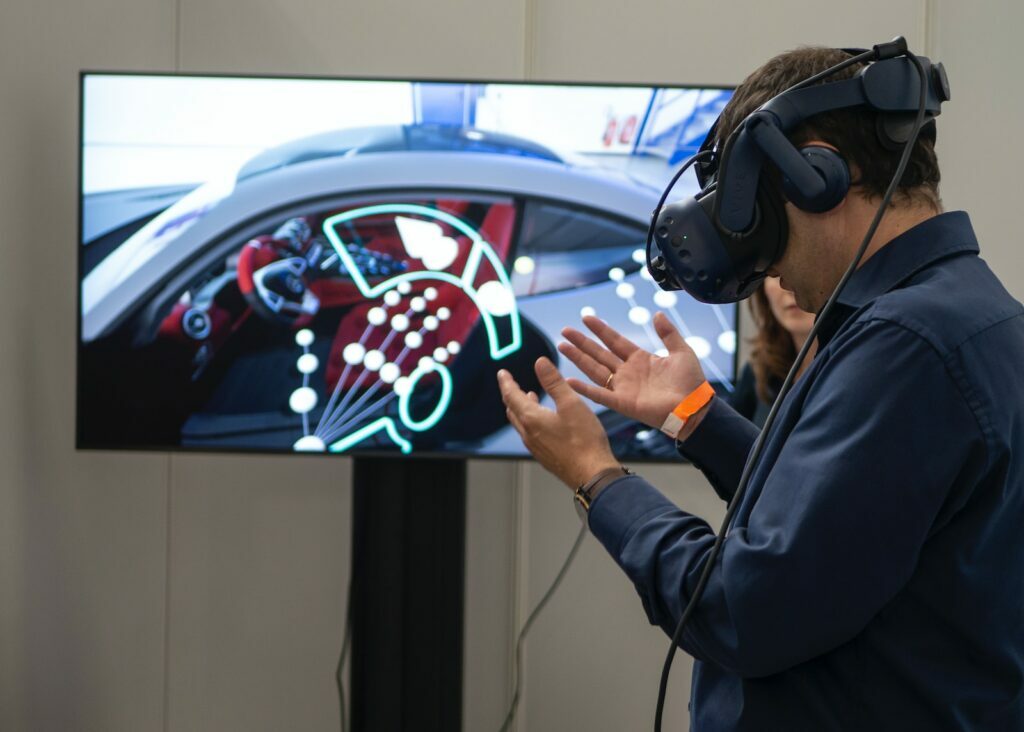
Tracking is a crucial component of virtual reality (VR) as it enables users to interact with and move within the virtual environment. There are two main methods for tracking VR devices: outside-in and inside-out.
Outside-in tracking is a method in which the VR system uses external cameras or sensors to track the position and orientation of the VR device. The cameras or sensors are positioned around the room, pointing towards the VR device and sending data to the computer. This data is then used to update the virtual environment in real-time.
Advantages of outside-in tracking include high accuracy and a wide tracking area. Since the cameras or sensors are positioned around the room, they can detect even small movements of the VR device, allowing for very precise tracking. Additionally, the wide tracking area means that users can move freely within the room, providing a more immersive experience.
Disadvantages of outside-in tracking include the need for additional hardware and setup, as well as potential interference from other objects in the room. Installing the cameras or sensors and ensuring that they are properly positioned and configured can be time-consuming and complicated. Furthermore, objects such as furniture or people can obstruct the cameras or sensors, reducing the accuracy of the tracking.
Inside-out tracking, on the other hand, uses sensors and cameras built into the VR device itself to track the user’s movements. The sensors and cameras detect the position and orientation of the device in relation to the surrounding environment. This information is then sent to the computer, which updates the virtual environment in real-time.
Advantages of inside-out tracking include its convenience and portability. Since all the sensors and cameras are built into the VR device, there is no need for additional hardware or setup. Users can simply put on the VR device and start using it, making it ideal for use on the go or in places where installing external cameras or sensors may be difficult.
Disadvantages of inside-out tracking include limited tracking area and reduced accuracy. The sensors and cameras built into the VR device are typically less powerful and less precise than external cameras or sensors, meaning that the tracking area is often smaller and less accurate. Additionally, objects in the environment can obstruct the sensors and cameras, reducing the accuracy of the tracking.
Degrees of Freedom
Degrees of freedom refer to the number of independent parameters that describe the position and orientation of an object in space. In VR, degrees of freedom typically refer to the number of parameters that describe the position and orientation of the VR headset or controllers
.
Outside-in tracking typically provides a higher degree of freedom, as it uses multiple cameras or sensors positioned around the room to track the VR device. This allows for a more comprehensive and accurate tracking of the device’s position and orientation, providing 6 DOF (degrees of freedom), which includes the ability to move in three-dimensional space and rotate along all three axes.
Inside-out tracking, on the other hand, typically provides a lower degree of freedom, as it relies on sensors and cameras built into the VR device to track the user’s movements. While it still provides 6 DOF, the tracking may not be as accurate or comprehensive as outside-in tracking.
It is worth noting that advances in technology and miniaturization are continuing to improve the accuracy and range of inside-out tracking, and some newer VR devices equipped with inside-out tracking are capable of providing 6 DOF with high accuracy. However, outside-in tracking still provides a higher level of accuracy and a wider range of motion for most VR applications.
Commercial Application
The differences between outside-in and inside-out tracking can affect their usage in commercial settings.
Outside-in tracking is typically more suitable for commercial settings where a high degree of accuracy and a wide tracking area are required. For example, it is commonly used in location-based VR attractions, such as VR arcades or escape rooms, where users need to move around freely within a large space. The wide tracking area and high accuracy provided by outside-in tracking make it ideal for these applications, where users are often physically active and require precise tracking of their movements.
Inside-out tracking, on the other hand, is typically more suitable for commercial settings where convenience, portability, and ease of use are the primary concerns. For example, it is commonly used in VR devices for home use, such as standalone VR headsets, where users need a device that is easy to set up and use without additional hardware. The convenience and portability of inside-out tracking make it ideal for these applications, where users are looking for a VR experience that they can enjoy in the comfort of their own homes.
In conclusion, both outside-in and inside-out tracking have their own strengths and weaknesses, and the choice between them will depend on the specific needs and requirements of the commercial setting. Both methods are being used in various commercial settings, and both are capable of delivering a high-quality VR experience in the right circumstances.



















































